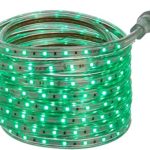Apple Filing Protocol (AFP) is, as the name suggests, a protocol that was designed by Apple. It allows users to transfer files between computers using an Ethernet cable or Wi-Fi connection. This may seem like an outdated way to send and receive files, but it has its advantages.
Table of Contents
Advantages of AFP
The Biggest Advantage: Security
While we all know about the security risks with USB drives or other storage mediums, nothing can beat being able to directly connect your devices for file transfers via ethernet cable (or if you have a newer Macbook Pro model) through wireless network. With AirDrop enabled on both ends of the device where you want to send/receive files, you can go into a folder on one end and drag the file to the other device using your trackpad.
Huge File Transfers? No Problem!
Apple Filing Protocol is great for large data transfers because it does not work with packet-switching like other protocols that may be better at handling intermittent connections (like FTP). This means if two devices are connected by ethernet cable or wireless network, they will “see” each other as soon as there’s an available connection. Packet switching would require both ends of the connection being active all the time in order to send/receive packets of information instead of waiting for an open line before sending them off again–so this method makes transferring big files much faster.
It’s Truly Cross-platform!
Apple Filing Protocol is not just for Macs and iOS devices–it’s available on Windows, too. The official installer (available through the Apple website) only installs a client that can access other Apple computers, but there are third-party software options out there to get AFP working with non-Apple machines as well.
File Sharing Made Simple
When you’re using FTP or SMB/CIFS networks instead of AFP, each machine connected by ethernet cable will have its own IP address which means they cannot share files together without first mapping them from one computer to another via directory structures (i.e. if you wanted to send a file from your computer to the other, one of the computers would need access via SMB or FTP and redirect it internally). AFP on the other hand supports unlimited combinations of machines on same network without any redirection because they’re all essentially sharing files through their own MAC addresses!
No Password Required: Ethernet Networking is Inherently Secure!
In addition to being faster than networking options like FTP, when people have more sensitive data that needs transferring over networks, many will turn away from these insecure methods in favor of using AFP which doesn’t require login credentials since ethernet networking is inherently secure (when two devices are connected directly by an ethernet cable–specifically with no additional switches/modems/routers in between–they’re on the same network).
No Root Access Required: Non-Admin Users Can Share Files Too!
Another great benefit of AFP is that it doesn’t require admin rights. This often comes in handy when you want to share files securely with a client or co-worker but only have limited access privileges as an end user yourself. It’s also useful for people who may not even use their computer regularly and just need occasional file transfers done (e.g., kids at summer camp, grandparents living alone). AFP lets any users without administrator level privileges still do things like transfer data, delete old files off hard drives etc.–a capability that FTP would never dream of providing due to requiring root access from its clients.
An AFP Server is Easy to Set Up
Setting up an Apple Filing Protocol server on your network couldn’t be simpler, as all you have to do is create a folder (or use one that’s already there) and point the service towards it with a single command before starting it up with the other required parameters (e.g., security settings). It can even provide anonymous access by default if desired, though this option will need tweaking in some cases for more secure environments





